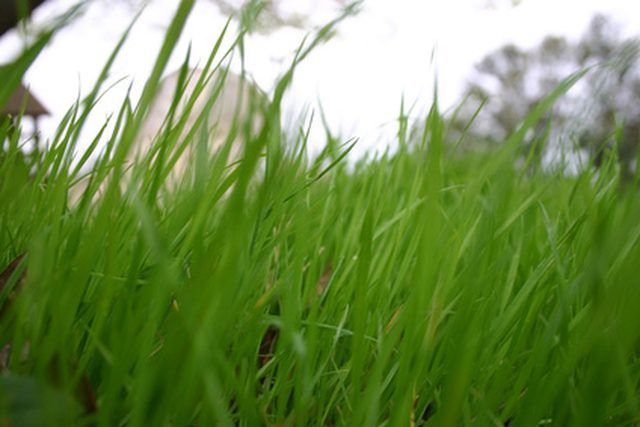Bulbs
Flower Basics
Flower Beds & Specialty Gardens
Flower Garden
Garden Furniture
Garden Gnomes
Garden Seeds
Garden Sheds
Garden Statues
Garden Tools & Supplies
Gardening Basics
Green & Organic
Groundcovers & Vines
Growing Annuals
Growing Basil
Growing Beans
Growing Berries
Growing Blueberries
Growing Cactus
Growing Corn
Growing Cotton
Growing Edibles
Growing Flowers
Growing Garlic
Growing Grapes
Growing Grass
Growing Herbs
Growing Jasmine
Growing Mint
Growing Mushrooms
Orchids
Growing Peanuts
Growing Perennials
Growing Plants
Growing Rosemary
Growing Roses
Growing Strawberries
Growing Sunflowers
Growing Thyme
Growing Tomatoes
Growing Tulips
Growing Vegetables
Herb Basics
Herb Garden
Indoor Growing
Landscaping Basics
Landscaping Patios
Landscaping Plants
Landscaping Shrubs
Landscaping Trees
Landscaping Walks & Pathways
Lawn Basics
Lawn Maintenance
Lawn Mowers
Lawn Ornaments
Lawn Planting
Lawn Tools
Outdoor Growing
Overall Landscape Planning
Pests, Weeds & Problems
Plant Basics
Rock Garden
Rose Garden
Shrubs
Soil
Specialty Gardens
Trees
Vegetable Garden
Yard Maintenance
Chemicals to Use on Crab Grass
Chemicals to Use on Crab Grass. Crabgrass is a weed that is feared by homeowners and groundskeepers alike. Besides taking over lawns and flower beds, crabgrass can be devastating to golf courses and sod farms. Though it may seem like an innocent weed, crabgrass reproduces quickly and is difficult to get rid of once it is established. Through the...

Crabgrass is a weed that is feared by homeowners and groundskeepers alike. Besides taking over lawns and flower beds, crabgrass can be devastating to golf courses and sod farms. Though it may seem like an innocent weed, crabgrass reproduces quickly and is difficult to get rid of once it is established. Through the use of pre-emergence chemicals, crabgrass can be prevented altogether, or at least controlled to keep a lawn looking healthy.
Preventing and Controlling Crabgrass with Chemicals
The single best way to prevent crabgrass is by maintaining a healthy, thick lawn. Purdue University Turf Sciences suggests you mow your lawn frequently throughout the summer, at least once every other week. Watering your lawn deeply down to the roots also helps promote healthy grass, and only water every time you notice signs of drought stress. The most obvious sign of this is when footprints across the grass stay in place for more than a few minutes. Apply nitrogen fertilizer twice a year in September and November. The Turf Sciences website advises against fertilizing in the summer because it can increase crabgrass hardiness.
The best chemical method for controlling crabgrass is pre-emergence, which is applied before the seed has germinated. This should be done in the early spring. When applying weed killer, make sure the area is well-watered, and the temperature is not above 85 degrees Fahrenheit. The best time to apply chemical is in the morning when there is no rain in the forecast. Do not mow or water for 24 hours after application, and only apply the recommended amount of chemical. The best chemicals to use include calcium arsenate, dacthal, dithiopyr, clordane and ornamec.
Calcium Arsenate
Calcium arsenate is the leading chemical in crabgrass prevention because it controls 95 percent to 100 percent of the seed population, according to Improve Your Garden Soil. Besides crabgrass control, the chemical also kills harmful lawn insects like white grubs and Japanese beetle larvae. It is best to use a nongranular version, as this type tends to wash away with a heavy rain. Instead, use a vermiculite-type, which clings better to seeds and will not adhere to pets' or children's feet. One application of this chemical will keep a lawn mostly crabgrass free for three years, with a booster one-third the original strength applied in the spring or fall or the second and third years. One disadvantage to using calcium arsenate is its danger to birds. Because the chemical kills earthworms in the ground, birds that eat these poisoned worms can die.
Dacthal
One of the most inexpensive chemicals for crabgrass prevention is dacthal. According to Improve Your Garden Soil, this chemical is best used in areas with a thick lawn and only occasional crabgrass problems. This chemical must be applied every spring, and can be very harmful to new lawn seed. Because of this residual effect, do not apply dacthal to bare spots, because new grass seed will not be able to grow for the season after the chemical application.
Dithiopyr
Dithiopyr is a chemical that is effective both pre-emergent and early postemergent for crabgrass. Early postemergent means that the chemical will kill crabgrass even after the seed has germinated. Dithiopyr only lasts for one season, and must be reapplied early every spring. This chemical is also effective when mixed with additional herbicides to help control other weed infestations, according to Dow AgroSciences.
Chlordane
The chemical chlordane is not as effective as other pre-emergent chemicals, but it is the least expensive. One advantage is that grass seeds can safely be sown within four to five days after application of chlordane, according to Improve Your Garden Soil. However, this chemical is only effective in the western part of the United States, possibly because of soil pH and moisture or sunlight intensity. Because chlordane only achieves 25 percent control of crabgrass populations, it is best used for areas with little infestation and major issues with soil insects like grubs or beetles.
Ornamec
When dealing with crabgrass in areas other than the lawn, such as flower beds and ornamental ground covering, the chemical Ornamec is very effective, according to Garden Counselor Lawn Care. Because it is a selective weed killer, Ornamec will not kill everything with it contacts. Young crabgrass can be killed with Ornamec in one application, while older crabgrass may need two to three applications. The only downside to using this chemical is its expense. However, the results may be worth the high cost.